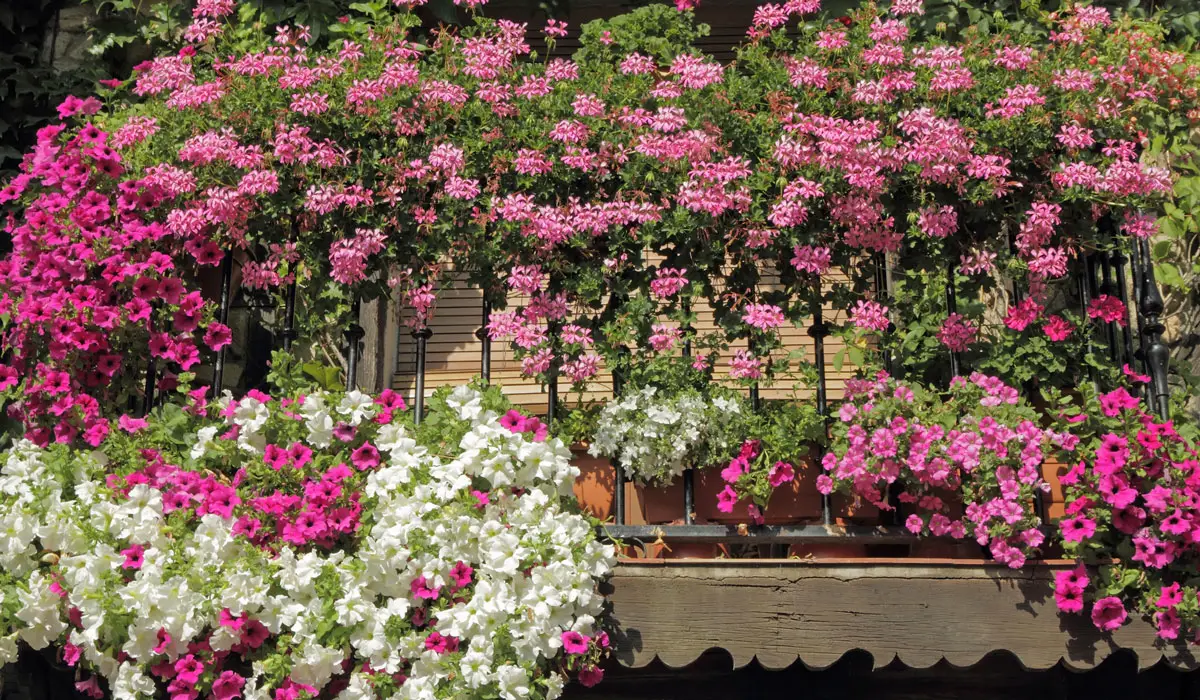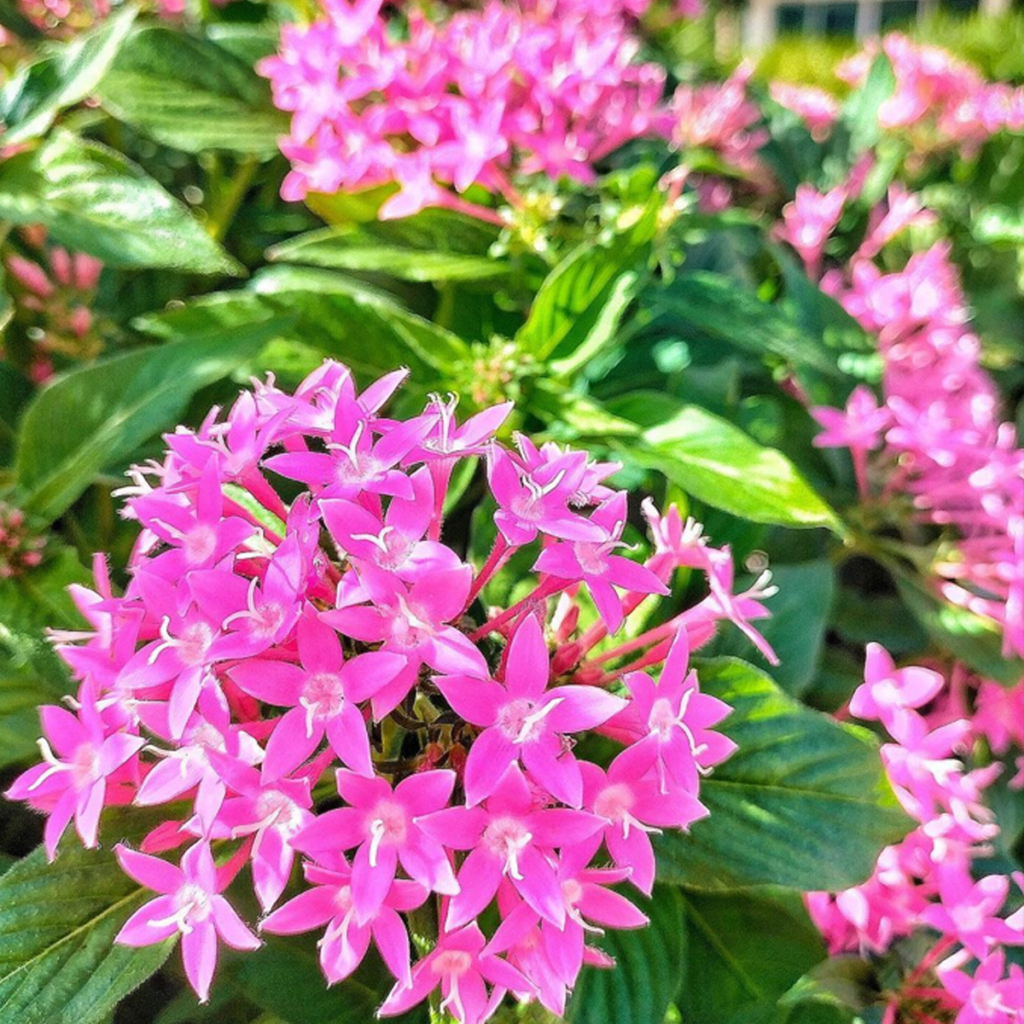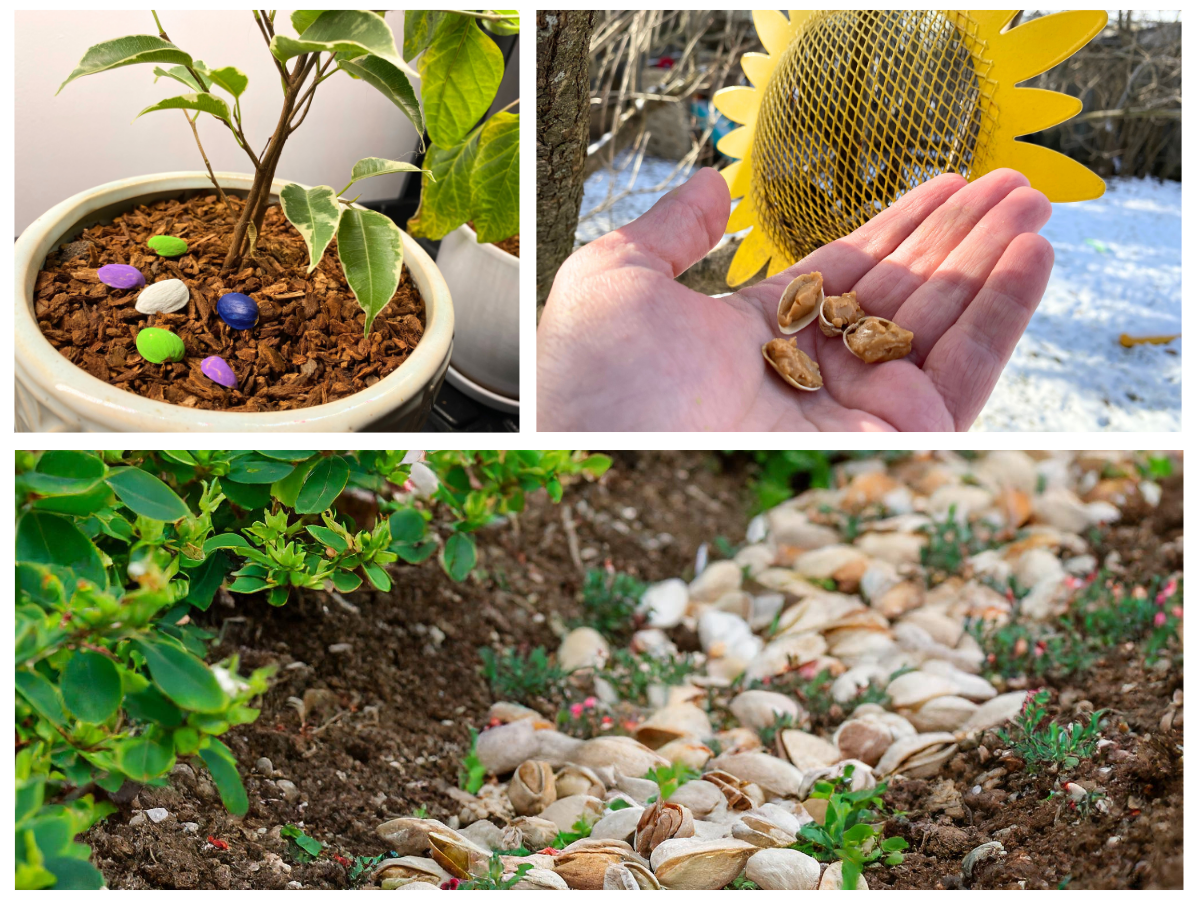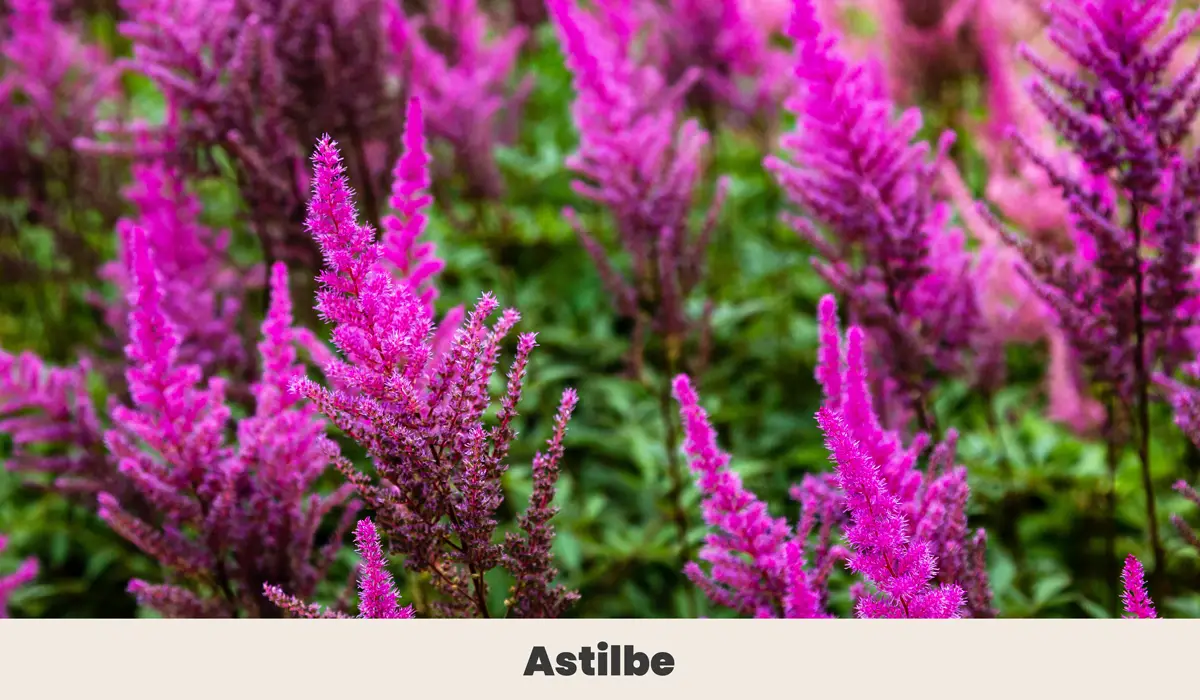11 Flowering Plants for a Small Beautiful Balcony + Growing

Looking for a way to bring a garden of flowers to your small balcony space? Bring some color into your life with plants that will thrive under compact conditions and can keep blooming all summer long.

I’ve put together this list to share 11 of my favorite flowering plants perfect for small balconies. From the classic Fuchsia to the exotic Marigold, each plant is known for its vibrant colors and beautiful blooms that last all summer long.
So, whether you’re an avid gardener or just starting out, keep reading to discover the best flowering plants for a small but beautiful balcony.
1. Fuchsia (Fuchsia magellanica)

Also known as the hardy fuchsia, Fuchsia magellanica is a beautiful and versatile plant that is the perfect addition to any small balcony.
While it can tolerate some sun, keeping the plant in cool, moist conditions is recommended, as it prefers partial to full shade. Fuchsia magellanica does best in fertile, well-draining soil rich in humus.
To keep the plant in the best shape, prune it in the spring before new growth begins. You can remove any dead, damaged, or diseased wood and any weak or spindly growth.
Hardy fuchsia is resistant to pests and diseases, but it’s still crucial to monitor for any issues and address them promptly.
During the growing season, keeping the soil evenly moist but not waterlogged is essential, as the plant doesn’t tolerate wet feet. Fertilizing the plant in the spring with a balanced fertilizer will help promote healthy growth and vibrant blooms.
| Botanical Name: | Fuchsia (Fuchsia magellanica) |
| Growth Rate: | Medium |
| Blooming Period: | Long |
| Hardiness Zones: | USDA 5A to 10B |
| Light: | Partial shade to full sun |
| Soil Needs: | Well-draining, nutrient-rich soil |
| Growing Period: | Perennial |
| Ease of Care: | Moderate |
| Diseases: | Crown and root rots, verticillium wilt, rust, and Botrytis blight |
| Propagation: | Stem cuttings, division, layering |
| Fertilizer: | Regularly during the growing season |
| Pests: | Spider mites, Whiteflies, Thrips and Aphids |
| Pot Size: | Medium to large, hanging or wide |
| Pruning: | Regularly to promote bushiness and flowering |
| Water Needs: | Regular watering, but avoid overwatering |
2. English Lavender (Lavandula angustifolia)

English Lavender (Lavandula angustifolia) is a charming and aromatic plant that is a must-have in any garden. This herbaceous perennial boasts beautiful, purple-blue flowers that bloom in the summer and are highly attractive to pollinators like bees and butterflies.
English Lavender doesn’t require much fertilizer and must be watered only when the soil is dry. These plants do best in well-draining soil that is nutrient-rich and slightly alkaline.
Lavender plants can be propagated from cuttings or seeds, and pruning is essential to keep the plant in its best shape. With proper care, English Lavender can live up to 15 years.
| Botanical Name: | Lavandula angustifolia |
| Growth Rate: | Moderate |
| Blooming period: | Long (June to August) |
| Hardiness Zones: | USDA 5A to 9B |
| Light: | Full sun (6 or more hours of direct sunlight per day) |
| Soil Needs: | Well-draining, nutrient-rich, alkaline soil (pH 6.5-7.5) |
| Growing Period: | Perennial |
| Ease of Care: | Easy |
| Diseases: | Root rot, fungal diseases, virus diseases |
| Propagation: | Division, Stem cuttings, seeds |
| Fertilizer: | Not necessary, but you can use a balanced fertilizer in the spring |
| Pests: | Aphids, spider mites, whiteflies |
| Pot Size: | Medium to large |
| Pruning: | Prune after flowering to maintain shape and encourage new growth |
| Water Needs: | Low to moderate / Drought Tolerant |
3. Raspberry Ice Paperflower (Bougainvillea)

Also known as Bougainvillea, Raspberry Ice Paperflower is a beautiful and vibrant flowering plant. With its cascading branches covered in bright pink and white flowers, it will surely catch the eye of anyone passing by.
This hardy plant thrives in full sun and requires well-draining soil, making it perfect for warmer climates. Its blooming period is long, with flowers appearing from late spring until fall.
Maintenance is easy, with pruning required to control its growth and encourage blooming. However, I recommend being cautious, as improperly handling the plant’s thorny branches can cause injury. Despite this, Bougainvillea is a rewarding plant to care for, and its stunning flowers make it a standout addition to any small balcony.
| Botanical Name: | Bougainvillea |
| Growth Rate: | Fast |
| Blooming period: | Long |
| Hardiness Zones: | USDA 9B to 10B |
| Light: | Full sun (6 or more hours of direct sunlight a day) |
| Soil Needs: | Well-draining, nutrient-rich soil, Acid (<6.0) |
| Growing Period: | Perennial |
| Ease of Care: | Moderate |
| Diseases: | Sensitive to fungal diseases and root rot |
| Propagation: | Seeds, Stem cuttings or layering |
| Fertilizer: | High phosphorus and nitrogen fertilizer for blooms |
| Pests: | Mealybugs, spider mites, aphids |
| Pot Size: | Large or hanging baskets for trailing types |
| Pruning: | Prune to shape and control size |
| Water needs: | Drought-tolerant, but likes consistent moisture |
4. Morning Glories (Ipomoea)

Morning glories are sure to brighten any balcony garden with their showy, trumpet-shaped flowers that bloom in a wide range of colors, from deep blues to vibrant pinks and purples. They are fast-growing plants that can reach heights of up to 6 inches or more, making them perfect for covering trellises, walls, and fences.
Morning glories are low-maintenance plants that thrive in full sunlight, perfect for north or south facing balconies and prefer well-drained soil. They grow best in hardiness zones 3 through 10 and bloom from mid-summer to early fall.
These plants require moderate watering, allowing the soil to dry out slightly between waterings. They do not require fertilizer, but a light application of compost can help to improve soil quality.
Morning glories can be easily propagated by seed or stem cuttings, which are generally resistant to diseases and pests. To keep them looking their best, they may need to be pruned occasionally to control their growth and shape.
| Botanical Name: | Ipomoea |
| Growth Rate: | Fast |
| Blooming period: | Long |
| Hardiness Zones: | USDA 3 to 10 |
| Light: | Full sun |
| Soil Needs: | Well-draining, nutrient-rich |
| Growing Period: | Annual or perennial |
| Ease of Care: | Easy |
| Diseases: | Root rot, leaf spot, rust, canker |
| Propagation: | Seed, sowing and cutting |
| Fertilizer: | Low-nitrogen fertilizer every four to five weeks |
| Pests: | Spider mites, aphids |
| Pot Size: | Medium to large |
| Pruning: | Prune regularly to encourage branching |
| Water needs: | Regular watering, but avoid overwatering |
5. Marigold (Tagetes)

Marigolds grow quickly and will start blooming in early summer until frost. They prefer full sun and well-drained, fertile soil. They are relatively low-maintenance and can tolerate neglect, making them an excellent option for novice gardeners. Marigolds are great patio companions since their smell can repel certain aphids and flies.
However, they can be susceptible to powdery mildew, fungal leaf spots, and root rot, so it’s crucial to maintain good air circulation around the plants and avoid overwatering. Marigolds can be propagated from seed and benefit from regular fertilization every 4-6 weeks.
Deadheading spent blooms will encourage the plant to produce more flowers. Moderate watering is recommended, and you must wait until the top inch of the soil is dry before watering again.
| Botanical Name: | Tagetes |
| Growth Rate: | Fast |
| Blooming period: | Long |
| Hardiness Zones: | USDA 2A to 11B |
| Light: | Full sun |
| Soil Needs: | Well-drained, fertile soil |
| Growing Period: | Annual, Perennial |
| Ease of Care: | Easy |
| Diseases: | Powdery mildew, fungal leaf spots, root rot |
| Propagation: | Seeds |
| Fertilizer: | Balanced fertilizer every 4-6 weeks |
| Pests: | Spider mites, Japanese Beetles and Slugs |
| Pot Size: | Small to medium |
| Pruning: | Require little pruning |
| Water needs: | Moderate, water when the top inch of soil feels dry |
6. Coral Bells (Heuchera)

Coral Bells are prized for their attractive red foliage that keeps its color all year round. It grows moderately and blooms in the spring to early summer, producing tiny bell-shaped flowers on slender stems.
This plant thrives in partial shade to full sun and prefers well-drained, fertile soil. It is relatively easy to care for and can be propagated through division or cuttings. However, it is susceptible to crown rot and powdery mildew and may attract spider mites and aphids.
To maintain its appearance, old or damaged foliage should be cut back in early spring and fertilized in early spring and midsummer. Regular watering is also necessary; the soil should be kept from drying out completely.
| Botanical Name: | Heuchera |
| Growth Rate: | Moderate |
| Blooming Period: | Spring to early summer |
| Hardiness Zones: | USDA 3A to 9B |
| Light: | Partial shade to full sun |
| Soil Needs: | Well-drained, fertile soil |
| Growing Period: | Perennial |
| Ease of Care: | Medium |
| Diseases: | Rust, Bacterial lead and powdery mildew |
| Propagation: | Division or cuttings |
| Fertilizer: | Fertilize in early spring and midsummer |
| Pests: | Weevils, mealybugs, Foliar nematodes and Japanese beetles |
| Pot Size: | Medium to large |
| Pruning: | Cut back old or damaged foliage in early spring |
| Water Needs: | Regular watering, do not let the soil dry out |
7. Rock Trumpet (Mandevilla)

Rock Trumpet, also known as Mandevilla, is a beautiful and exotic tropical known for its fast-growing vine with striking trumpet-shaped flowers that bloom profusely from spring to fall.
Rock Trumpet requires full sun and well-draining, nutrient-rich soil to thrive. It is relatively easy to care for and requires regular watering and fertilization during the growing season.
Pruning is necessary to maintain its shape and to promote new growth. Rock Trumpet can be propagated through stem cuttings, and it is relatively pest-free, making it a low-maintenance choice for gardeners of all levels.
| Botanical Name: | Mandevilla |
| Growth Rate: | Fast |
| Blooming period: | Late spring to fall |
| Hardiness Zones: | USDA 10A to 11B |
| Light: | Full sun |
| Soil Needs: | Well-draining, moist soil |
| Growing Period: | Perennial |
| Ease of Care: | Medium |
| Diseases: | Root rot, leaf spot, powdery mildew |
| Propagation: | Stem cuttings |
| Fertilizer: | Balanced, water-soluble fertilizer every 2-3 weeks during heavy growth and flowering |
| Pests: | Mealybugs, aphids, and scale insects |
| Pot Size: | Medium to large |
| Pruning: | Prune in early spring to shape and control size |
| Water Needs: | Regular watering, but avoid overwatering |
8. Sweet Alyssum (Lobularia maritima)

Sweet Alyssum is a charming annual flower popular among gardeners for its delicate beauty and sweet fragrance. It is native to the Mediterranean region and grows best in full sun to partial shade, in well-draining, consistently moist soil.
The plant produces clusters of tiny flowers that bloom in shades of white, pink, and lavender from spring to fall. It is a low-growing plant that reaches up to 8 inches in height and spreads up to 12 inches wide, making it an excellent choice for borders, containers, and hanging baskets.
Sweet Alyssum is relatively disease and pest resistant, and the only pruning required is to deadhead spent blooms to encourage continuous blooming.
| Botanical Name: | Lobularia maritima |
| Growth Rate: | Moderate |
| Blooming Period: | Long blooming period from spring to fall |
| Hardiness Zones: | USDA 5A to 9B |
| Light: | Full sun to partial shade |
| Soil Needs: | Well-draining, nutrient-rich soil |
| Growing Period: | Annual or Perennial, depending on the climate |
| Ease of Care: | Easy to care for and low maintenance |
| Diseases: | Downy mildew, stem and crown rots |
| Propagation: | Seeds or cuttings |
| Fertilizer: | Does not require regular fertilization as long as it is grown in reasonably fertile soil |
| Pests: | Aphids or whiteflies |
| Pot Size: | Small to medium-sized pots, as well as hanging baskets |
| Pruning: | Regular deadheading can promote continued blooming |
| Water Needs: | Regular watering is needed, especially in hot and dry conditions |
9. Crepe Jasmine (Tabernaemontana Divaricata)

With its fragrant, star-shaped, white flowers and glossy, dark green leaves, Crepe Jasmine adds a touch of elegance to any garden.
It blooms throughout the year, but its peak blooming period is from spring to summer. It is a perennial plant that is relatively easy to care for and requires regular watering to moisten the soil.
Pruning is recommended after the flowering season to maintain its shape and size. Propagation can be done through stem cuttings or seeds.
While it is a low-maintenance plant, it can be susceptible to pests and diseases, including aphids and scale insects.
| Botanical Name: | Tabernaemontana Divaricata |
| Growth Rate: | Moderate |
| Blooming period: | Long |
| Hardiness Zones: | USDA 10B through 11 |
| Light: | Full sun to partial shade |
| Soil Needs: | Well-draining, nutrient-rich, slightly acidic soil |
| Growing Period: | Perennial |
| Ease of Care: | Moderate |
| Diseases: | No diseases are of major concern |
| Propagation: | Seeds or cuttings |
| Fertilizer: | Slow-release fertilizer recommended monthly for alkaline soils |
| Pests: | Scales, sooty mold, mites and nematodes |
| Pot Size: | Medium to large |
| Pruning: | Prune after flowering to maintain the desired shape |
| Water needs: | Regular watering, but not overwatering |
10. Pansies (Viola tricolor var. hortensis)

Pansies heart-shaped petals in vibrant shades of purple, yellow, white, and blue add a pop of color to any outdoor space. They are relatively easy to care for and are versatile in terms of their usage, as they can be planted in small containers or hanging baskets.
| Botanical Name: | Viola tricolor var. hortensis |
| Growth Rate: | Rapid |
| Blooming period: | Long, often blooming from early spring until late fall |
| Hardiness Zones: | USDA 2A to 9B |
| Light: | Partial to full sun |
| Soil Needs: | Rich, well-draining soil, Acid (<6.0), Neutral (6.0-8.0) |
| Growing Period: | Typically grown as an annual |
| Ease of Care: | Easy |
| Diseases: | Fungal diseases, root rot and downy mildew |
| Propagation: | Seeds or cuttings |
| Fertilizer: | Water soluble, liquid fertilizer every 3 months |
| Pests: | Aphids and slugs |
| Pot Size: | Small to medium |
| Pruning: | Deadheading spent blooms can promote more flowering |
| Water Needs: | Water them weekly |
11. Petunias (Petunia hybrida Vilm)

Petunias are fast-growing and easy to care for, making them an excellent choice for novice gardeners. They require well-drained soil and plenty of sunlight but can also tolerate partial shade.
Petunias benefit from regular fertilization and deadheading to promote continuous blooming. Common pests and diseases that affect petunias include aphids and botrytis blight, but these can be easily managed with proper care and maintenance.
| Botanical Name: | Petunia hybrida Vilm |
| Growth Rate: | Fast |
| Blooming period: | Long |
| Hardiness Zones: | USDA 10A through 11B |
| Light: | Full sun, partial shade |
| Soil Needs: | Well-draining, nutrient-rich soil |
| Growing Period: | Annual |
| Ease of Care: | Easy/Medium |
| Diseases: | Gray mold, powdery mildew, root rot |
| Propagation: | Seeds, cuttings |
| Fertilizer: | Balanced liquid fertilizer every 2-3 weeks |
| Pests: | Aphids, spider mites, whiteflies |
| Pot Size: | Medium to large |
| Pruning: | Deadheading spent flowers to encourage new blooms |
| Water needs: | Regular watering, keep the soil moist but prevent waterlogging |
Final Thoguhts
Incorporating flowering plants into your balcony can liven up the atmosphere. There are many options to choose from, each with its unique characteristics and maintenance requirements.
Whether you opt for the delicate beauty of the Sweet Alyssum or the showy blooms of the Petunia, there is a flowering plant out there for every preference and skill level.
By considering factors such as light, soil, and water needs and available space, you can ensure your plants thrive and bring joy to your space. So why not add some blooming beauty to your life today?




